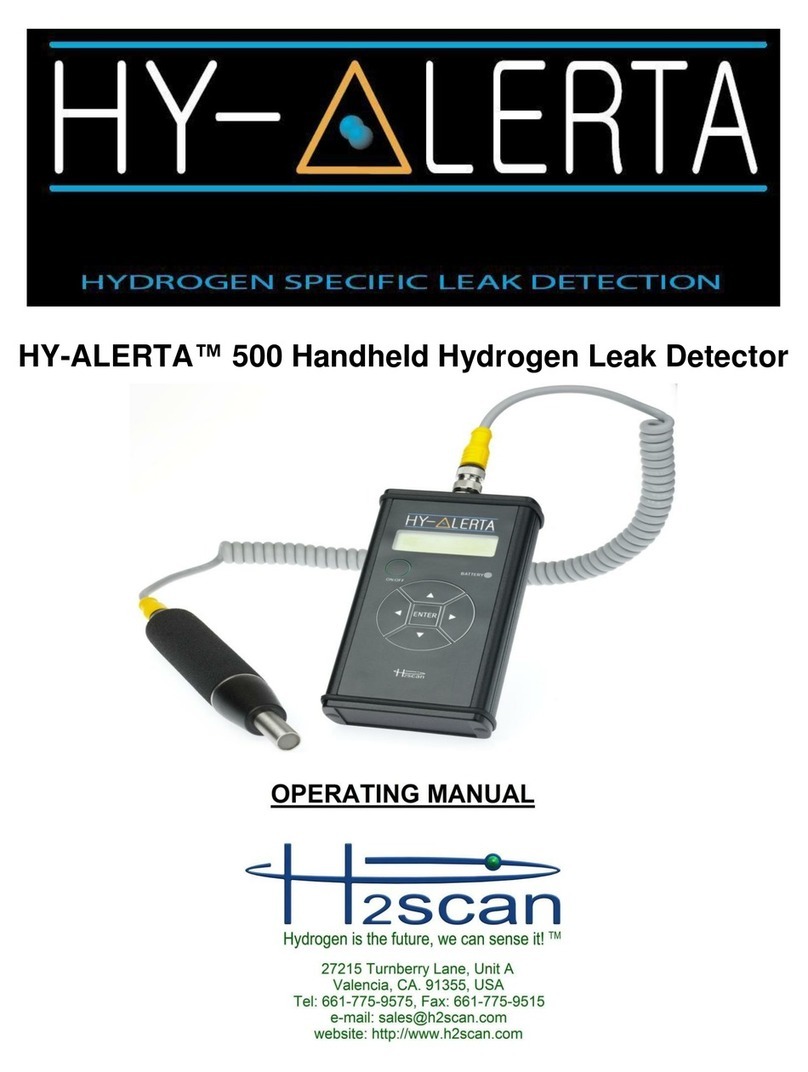HY-ALERTA™ 1600, Intrinsically Safe Area Hydrogen Monitor
OPERATING MANUAL
90000012 R8 Page 3 of 31
CONTENTS
1DESCRIPTION........................................................................................................................................5
2SPECIFICATIONS...................................................................................................................................5
3ATEX RATING.........................................................................................................................................6
4INSTALLATION.......................................................................................................................................7
4.1 Associated Equipment ..................................................................................................................7
4.2 Mounting .......................................................................................................................................8
4.3 Connections ..................................................................................................................................8
4.4 Settings .........................................................................................................................................9
5STARTUP................................................................................................................................................9
5.1 Settings .........................................................................................................................................9
6OPTIMUM UNIT PERFORMANCE.......................................................................................................10
7OPERATION .........................................................................................................................................10
7.1 Analog Output .............................................................................................................................10
7.2 Display ........................................................................................................................................10
7.3 Keypad........................................................................................................................................11
7.4 Configuration Menu.....................................................................................................................11
8SERIAL COMMUNICATION .................................................................................................................12
8.1 Software......................................................................................................................................12
8.2 Connection..................................................................................................................................12
8.3 Format and Settings....................................................................................................................12
8.4 Command Levels........................................................................................................................12
8.5 Command Summary...................................................................................................................13
9MAINTENANCE ....................................................................................................................................17
9.1 Cleaning......................................................................................................................................17
10 CALIBRATION.....................................................................................................................................17
10.1 Factory Calibration –...............................................................................................................17
10.2 Field Calibration......................................................................................................................17
11 FIELD CALIBRATION..........................................................................................................................17
11.1 Calibration Interval..................................................................................................................17
11.2 Gases......................................................................................................................................17
11.3 Gas Connection......................................................................................................................17
11.4 Procedure ...............................................................................................................................17
11.5 Calibration Using the Serial Interface.....................................................................................18
11.6 Calibration Using the Keypad.................................................................................................20
12 CLEAR FIELD CAL..............................................................................................................................20
12.1 Clear Field Cal Using the Serial Interface ..............................................................................20
12.2 Clear Field Cal Using the Keypad ..........................................................................................20
13 MESSAGES.........................................................................................................................................20
13.1 Warmup_XXX.........................................................................................................................20
13.2 Settle.......................................................................................................................................20
13.3 Wait_XXX ...............................................................................................................................20
13.4 htroff........................................................................................................................................20
13.5 Error_XXX...............................................................................................................................21
14 APPENDIX 1 FOXTERM SETUP........................................................................................................22
14.1 Foxterm Installation ................................................................................................................22
14.2 Foxterm setup.........................................................................................................................22
15 APPENDIX 2 - MENUS .......................................................................................................................23
16 APPENDIX 3........................................................................................................................................28
16.1 Control Drawing......................................................................................................................28
16.2 Serial Barrier Switch Settings for RS232 connection to PC...................................................31




























